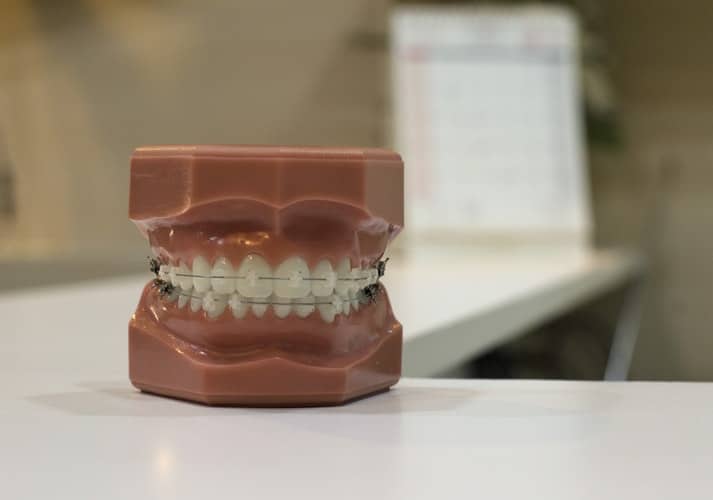More and more people are getting highly concerned about their smiles nowadays. This is mainly due to the fact that the first impression plays a crucial role and your smile is an integral part of it. As you know, there is always room for improvement and your smile is not an exclusion to that. Advances in cosmetic dentistry allow people to transform their teeth and enjoy smile confidence.
In the vast majority of cases, extracted or missing teeth raise some dental concerns. Thanks to cosmetic bridges, people have a chance to replace their missing teeth. You need to make sure to select the right dental bridge in order to obtain a confident and healthy smile. The following sections of this article focus on depicting the key aspects of cosmetic bridges everyone should know.
What Are Dental Bridges?
Cosmetic bridges are aimed to bridge the gap that appeared from one or more missing teeth. It consists of two or more crowns for the teeth on either side of the gap. In medical terms, these two or more anchoring teeth are called abutment teeth and a false tooth in between. False teeth are also known as pontic and they are typically produced from alloys, gold, porcelain or even a combination of the aforementioned materials. Cosmetic bridges are generally supported by implants or natural teeth.
What Are The Different Types Of Dental Bridges?
Cosmetic bridges come in three main types and they are as follows:
- Cantilever bridges: they are typically utilized when there are adjacent teeth on only one side of the missing tooth or teeth. It should be also said that they are not very common nowadays and they are not a good option for the back of the mouth where it can put a lot of pressure on other teeth and damage them.
- Traditional bridges: they involve creating a crown for the implant or tooth on either side of the missing tooth with a pontic in between. Specialists claim that they are the most common type of dental bridge among patients. They are made of either ceramics or porcelain fused to metal.
- Maryland bonded bridges: they are also known as resin-bonded bridge or a Maryland bridge. They are produced from porcelain fused to metal, porcelain or plastic teeth and gums supported by a porcelain or metal framework. Normally, porcelain or metal wings on one side of the bridge are bonded to the existing teeth.

What Are The Benefits Of Dental Bridges?
Cosmetic bridges have a number of advantages and the main ones are listed below:
- Improve your smile: as was mentioned before, your smile plays a crucial role in your daily life. A healthy and beautiful smile is able to boost people’s confidence level. Dental bridges allow accomplishing this task. Keep in mind that you cannot put a price tag on your smile, which is both healthy and beautiful.
- Improve chewing: teeth loss can lead to a number of difficulties with the eating process. This pain can be a result of surrounding teeth shifting toward the open space. Additionally, food leftovers can also gather in the empty socket and lead to gum damage. Cosmetic bridges are a perfect solution to this kind of problem. You do not want to have issues while eating and feel pain on a regular basis and cosmetic bridges do a great job in eliminating this problem.
- Improve speaking: a tooth loss can lead to having problems with pronouncing certain words or speak with a lisp. In order for these issues to be fixed, you will need to manage the tooth loss that makes your speech suffer. You have to keep in mind that your teeth do not only help you with the chewing process but they also play a crucial role in the way you speak.
- Keep the natural shape of your face: a lot of people have no idea that the jawbone starts to deteriorate when the tooth is lost. Doctors say that tooth roots stimulate the bone cells in the jawbone. Lack of this stimulation can lead to your jawbone starting to deteriorate. In addition to that, serious cases of jawbone deterioration can cause facial collapse and further tooth loss. It will, in turn, affect the shape of your face.
- Do not allow your teeth to shift: strong roots under the surface of gums allow your teeth to be held in place. Dentists add that the neighboring teeth also help to keep the teeth in place. A major tooth loss can lead to the remaining teeth beginning to move toward the open space. Cosmetic bridges can assist in filling the space with an artificial tooth. Apart from that, if the teeth move too much they become loose leading to further tooth loss.
How Does This Procedure Work?
Everything starts with the first visit to a dental specialist where the abutment teeth are prepared. The preparation process includes recontouring these teeth by removing the portion of enamel, which allows room for a crown to be placed over them. The next step is taking impressions of the teeth, which work as a model from which the bridge, crown and pontic are going to be made by a dental laboratory. During the process of production, a dentist will create a temporary bridge in order to protect the exposed gums and teeth.
A second visit involves removing the temporary bridge, checking and adjusting the new porcelain or metal bridge. This step is highly important in order to achieve a perfect fit. Doctors say that multiple visits might be required for the purpose of checking the fit of the metal framework and bite. However, it crucially depends on the individual case of the patient. In case if the dental bridge is a fixed bridge, a dentist might temporarily cement it in place for several weeks in order to make sure it fits properly. The bridge is normally cemented into place after several weeks.
How Long Do Cosmetic Bridges Last?
Studies show that dental bridges tend to last between 5 to 15 years. However, this duration can be much lower if the person does not maintain a proper level of hygiene and does not perform regular checkups with a dentist. Some specialists say that the approximate lifespan of dental bridges (if maintaining good hygiene) is more than 10 years.
How Much Do Dental Bridges Cost?
The total cost of cosmetic bridges highly depends on the type of bridges a person selects and the area of a country where the procedure is performed. You should also keep in mind that your dental insurance will normally pay a certain percentage of the total cost. Although, the percentage paid depends on your individual dental plan.

How To Take Care Of Dental Bridges?
As was mentioned earlier the way you take care of your cosmetic bridges influences their lifespan. It is advised to keep your teeth healthy and strong in order to assure their success. Do not forget to brush your teeth at least twice a day and floss them using an antiseptic mouthwash. It will help in preventing tooth decay and gum disease that can cause tooth loss. In the vast majority of cases, your dentist will demonstrate the proper way of brushing and flossing teeth. You should not also forget about the need for a balanced diet for proper nutrition as it plays a huge role as well.


